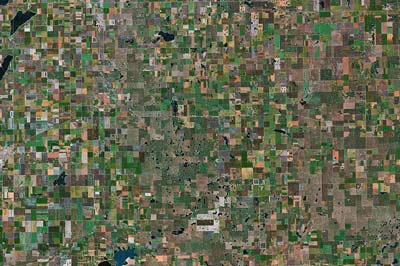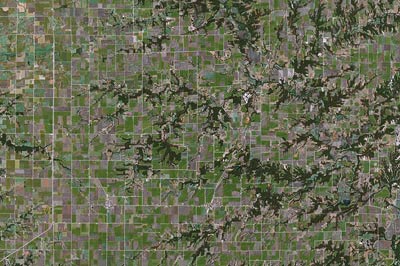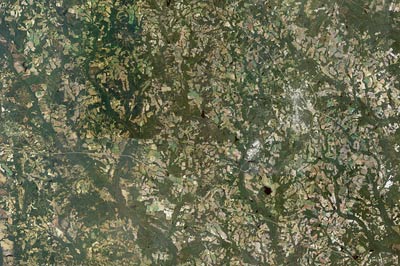
Have you ever taken a window seat flight across the United States? How about Google Earth - have you ever looked at the high-resolution satellite photographs of our patchworked landscape? Scenes like the ones accompanying this blog post are common coast to coast. Though you'll see that there are still rich natural areas in the US, virtually none are untouched. Thanks to organizations like The Nature Conservancy, some habitats are being restored. But habitat loss and fragmentation remains the primary cause of the decline of bird populations. In his book "The Song of the Dodo," David Quammen diagnoses the problem with an effective analogy:

"Let's start indoors. Let's start by imagining a fine Persian carpet and a hunting knife. The carpet is twelve feet by eighteen, say. That gives us 216 square feet of continuous woven material. Is the knife razor-sharp? If not, we hone it. We set about cutting the carpet into thirty-six equal pieces, each one a rectangle, two feet by three. Never mind the hardwood floor. The severing fibers release small tweaky noises, like the muted yelps of outraged Persian weavers. Never mind the weavers. When we're finished cutting, we measure the individual pieces, total them up - and find that, lo, there's still nearly 216 square feet of recognizably carpetlike stuff. But what does it amount to? Have we got thirty-six nice Persian throw rugs? No. All we're left with is three dozen ragged fragments, each one worthless and commencing to come apart."

Link: Finding Solutions to Habitat Loss (Adobe Acrobat .PDF)

















